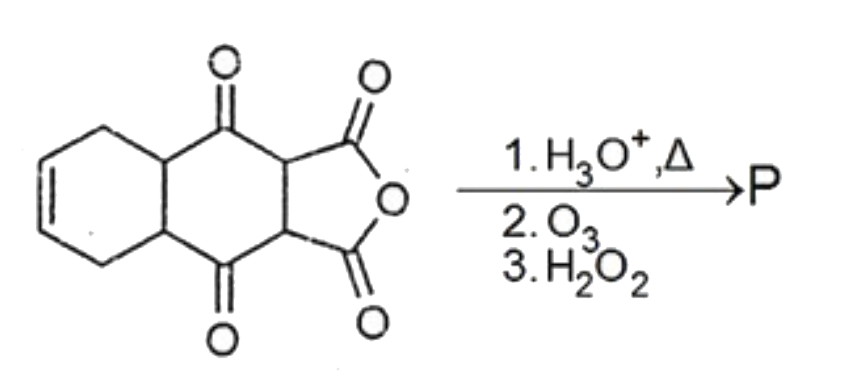Phospholipids are esters of glycerol with
(a)one carboxylic acid residue and two phosphate groups
(b)three phosphate groups
(c)three carboxylic acid residues
(d)two carboxylic acid residues and one phosphate group
one carboxylic acid residue and two phosphate groups
three phosphate groups
three carboxylic acid residues
two carboxylic acid residues and one phosphate group
The correct Answer is:D
To solve the question about phospholipids, we need to understand their structure and components. Let's break it down step by step.
1. Understanding Phospholipids:
- Phospholipids are a type of lipid molecule that are essential components of cell membranes. They consist of a glycerol backbone, fatty acid tails, and a phosphate group.
2. Identifying Components:
- Phospholipids are esters formed from glycerol and fatty acids. Specifically, they are formed from glycerol (which has three hydroxyl groups) and two fatty acids (which are carboxylic acids).
3. Analyzing the Options:
- (a) One carboxylic acid residue and two phosphate groups: This is incorrect because phospholipids have two fatty acids, not one, and only one phosphate group.
- (b) Three phosphate groups: This is incorrect as phospholipids only contain one phosphate group.
- (c) Three carboxylic acid residues: This is incorrect because phospholipids only have two carboxylic acid residues from the two fatty acids.
- (d) Two carboxylic acid residues and one phosphate group: This is correct as phospholipids are indeed composed of two fatty acids (each contributing one carboxylic acid) and one phosphate group.
4. Conclusion:
- Based on the analysis of the options, the correct answer is (d) two carboxylic acid residues and one phosphate group.
Final Answer:
(d) two carboxylic acid residues and one phosphate group
- Phospholipids are a type of lipid molecule that are essential components of cell membranes. They consist of a glycerol backbone, fatty acid tails, and a phosphate group.
- Phospholipids are esters formed from glycerol and fatty acids. Specifically, they are formed from glycerol (which has three hydroxyl groups) and two fatty acids (which are carboxylic acids).
- (a) One carboxylic acid residue and two phosphate groups: This is incorrect because phospholipids have two fatty acids, not one, and only one phosphate group.
- (b) Three phosphate groups: This is incorrect as phospholipids only contain one phosphate group.
- (c) Three carboxylic acid residues: This is incorrect because phospholipids only have two carboxylic acid residues from the two fatty acids.
- (d) Two carboxylic acid residues and one phosphate group: This is correct as phospholipids are indeed composed of two fatty acids (each contributing one carboxylic acid) and one phosphate group.
- Based on the analysis of the options, the correct answer is (d) two carboxylic acid residues and one phosphate group.
(d) two carboxylic acid residues and one phosphate group
Similar Questions
Knowledge Check
- Question 1 - Select One
Carboxylic acid group can be detected by which test ?
ASodium bisulphite testBFehling's solution testCTollen's reagentDWith NaHCO3
Which of the following on oxidation can give a carboxylic acid in one step ?
View SolutionBoric acid is tribasic acid.
Boric acid contains three hydroxyl groups.View SolutionEsters of fatty acid with higher molecular weight monohydric alcohols lacking phosphate groups are known as
View SolutionWhy carboxylic acids do not give the characteristic carbonylic reactions of carbonyl group?
View SolutionHow will you convert:
a carboxylic acid to a primary amine having one carbon atom less than the carboxylic acid itself?View SolutionGive reasons for the following
The mono-amino carboxylic acids have two pKa values.View SolutionChoose the odd one out.
(a) Keratin phosphate
(b) Hyaluronic acid
(c) Chodriotin sulphate
(d) Alginic acidView Solution


